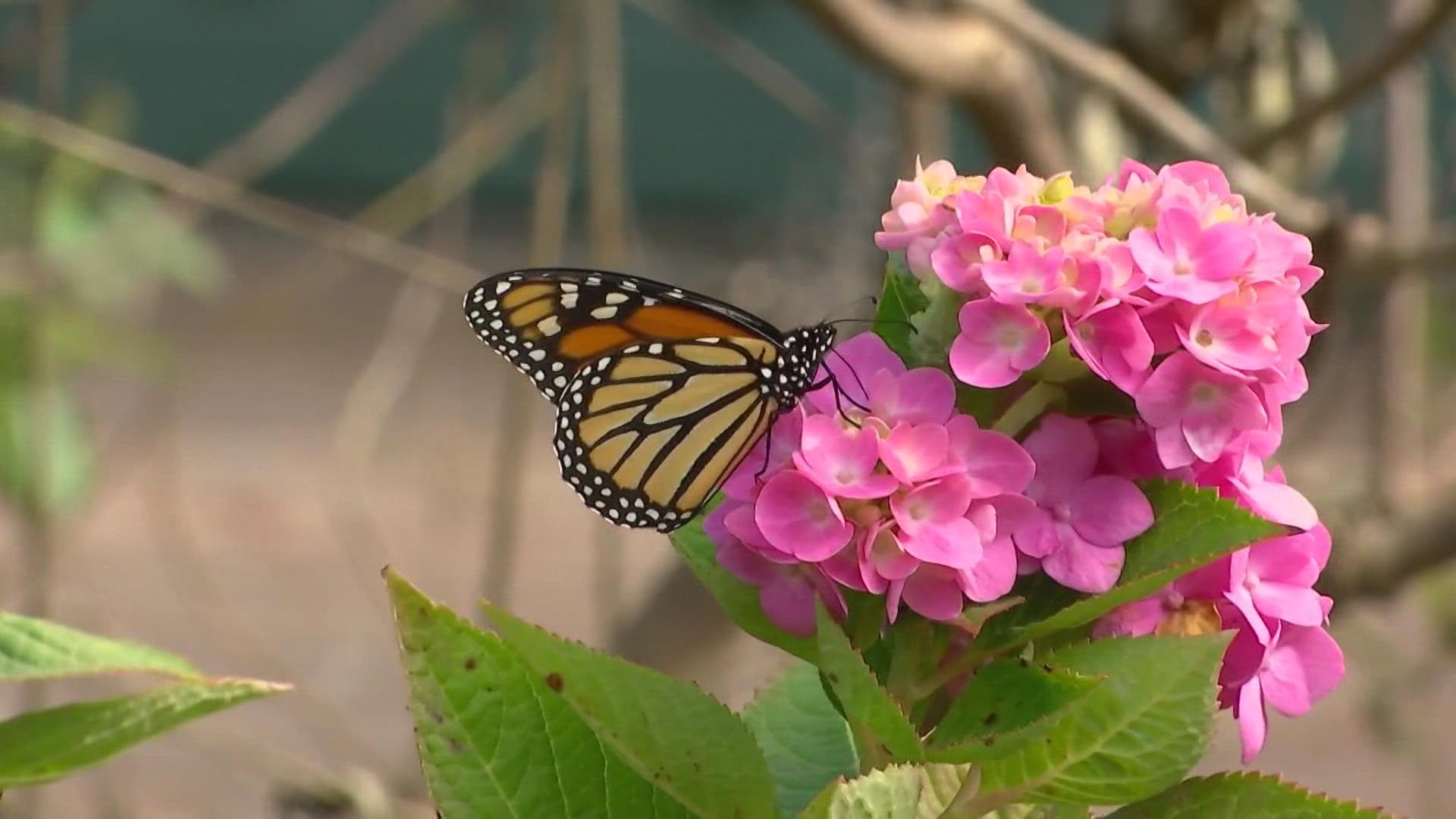PHOENIX — We're officially in fall now, but the temperatures are way too hot for the monarch butterfly. Once the temperatures really drop, you may see some monarch butterflies in nectar gardens planted throughout the Phoenix valley.
On April 30, 2021, Mayor Kate Gallego signed the National Wildlife Federation's Mayor's Monarch Pledge. This pledge commits the city to take action to support the monarch butterfly population.
Tricia Balluff and Michael Eagan, with the City of Phoenix, explain that the monarch butterfly comes through Phoenix in the fall, as it's heading south to Mexico for the winter and coastal California. The monarch also comes through in the spring when it's starting to head back north.
>> Download the 12News app for the latest local breaking news straight to your phone.
Phoenix Mayor Kate Gallego declared the month of September as, "Planting for Monarchs Month." Although September is over, October is the perfect time to start planting milkweed or a native nectar plant.
Balluff says that another incentive to planting for the monarch is that these types of plants consume less water -nothing better than a water-wise way of promoting biodiversity and helping a key pollinator species.
RELATED: It's butterfly season in the Valley
Native Milkweed and native nectar plants are essential for monarch migration and survival. Milkweed is critical to the life cycle of the monarch because it's where they lay eggs, and it's the sole food source of the caterpillar. Nectar-producing plants provide food for the butterfly, giving it the energy and fuel needed for survival, reproduction, and migration.
Balluff also mentions, "helping the monarch helps not just the monarch butterfly but a whole range of other native pollinators. They are so important for our food production and for our beautiful desert ecosystem."
You can find more about the environmental program here.
WE ❤ ARIZONA
Explore amAZing people, places and things across our state on our 12News YouTube playlist here.

